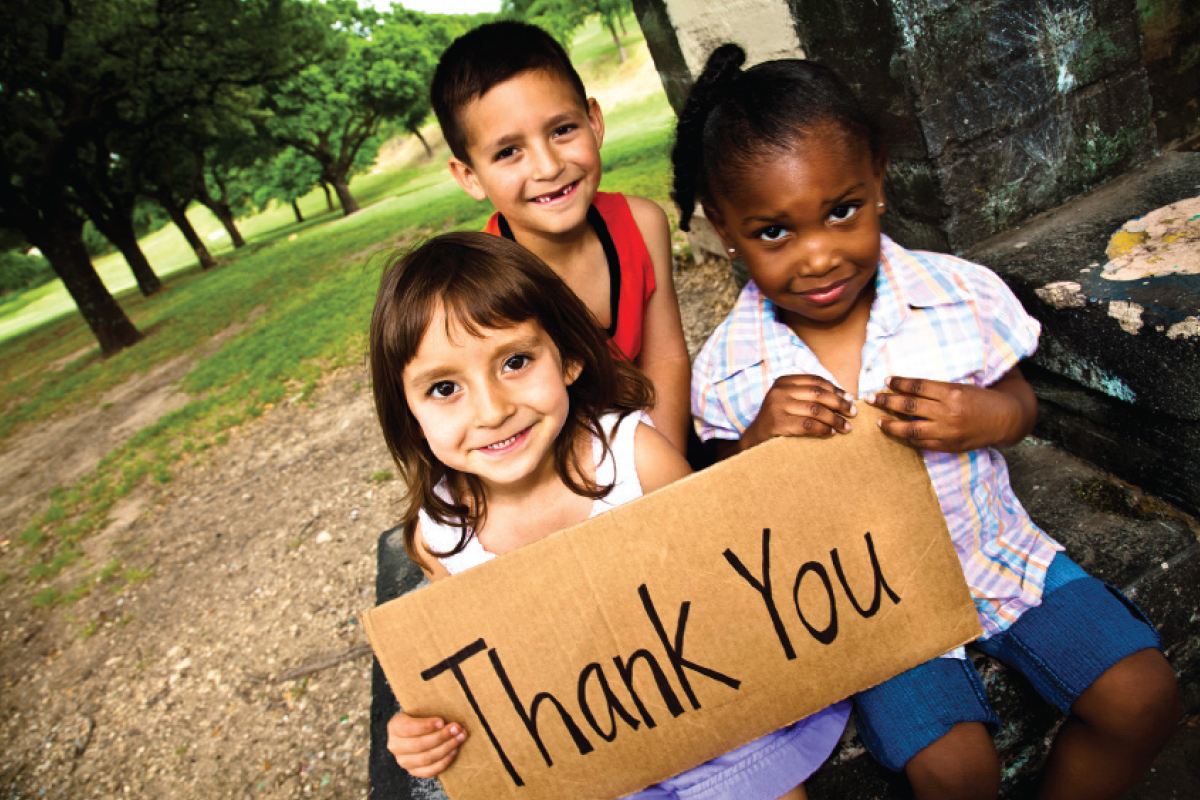Teaching Thanks During a Season of Giving and Receiving

Southerners have always seemed to be exceptionally courteous. We are known for our “yes, ma’ams” and “no, sirs,” but teaching those manners is no easy feat. Even if your child knows his or her manners, there is a good chance it won’t be long before some bad habits are being picked up when he or she is away from home. It is hard being a parent. It is even harder to raise children with manners. Ask any parent. This Thanksgiving season might be a good time to stop and consider what values you are instilling in your children, what priorities you are teaching them.
In her book Raising Respectful Children in a Disrespectful World, author Jill Rigby has an interesting theory that our generation is teaching self-esteem in a misinterpreted intention over self-respect.
Greed versus gratitude; arrogance versus humility; insecurity versus confidence; discontentment versus contentment; futility versus perseverance.
“As parents it is our obligation to break a child’s innate sense of selfishness instilled at birth and create selflessness,” Rigby says. “Many behavorial issues that arise later in life can be prevented if a child is taught to think of others besides themselves.”
She pointed out that promoting self esteem includes overly praising children when it might not be appropriate, rewarding children with material things when it is not necessary, and making children the head of the household by letting them be the decision makers at inappropriate times.
In Rigby’s book she suggests her teaching method called the School of Respect. It shows readers four stages based on a child’s age. For each stage she lays out a strategy for helping to train and teach respect. The first strategy for the youngest category encourages parents to establish routines, then advances to offering recognition, followed by building relationships and the last stage ends with giving responsibility to the child.
Throughout the book, Rigby gives parents practical ways to incorporate these parenting techniques into everyday situations. For example, she says instead of telling a child to pick up his or her room, she suggests that parents tell them to pick up their toys so no one else will trip and fall over the toys. She says by telling him or her how their actions affect others, they will eventually begin to consciously take into consideration how their actions affect others before they do something.
Rigby also likes to reiterate that to raise a selfless child, you have to be honest with your child. Although it may seem cruel to not offer over the top praise on everything he or she does, Rigby reinforces the value of honesty and telling your child “that was a good try” or “a good effort” in lieu of “you were the best one out there, great performance.” She says that this will encourage a better work ethic and a trust between you and the child that you were honestly paying attention to his or her performance and know that they made a mistake and can improve.
When asked about the most critical aspect of raising respectful children, Rigby noted two things. First, a parent must be who they want their children to become: a respectful person in his or her own right. Second, a parent must teach their children from a very early age that they have to consider others and how their actions will affect people that surround them.
As parents, it is our responsibility to provide shelter for our children, food, and to offer educational guidance and emotional support. Imagine if all parents were able to put teaching self-respect in the same category as one of those basic daily needs.










